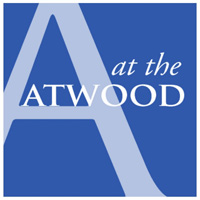
Alice Stallknecht – Mural Artist
I was born into an affluent middle-class family in New York City and aspired to a career as a professional artist since childhood. After high school, I attended the progressive New York School of Applied Design for Women from 1898 to 1901 where I studied illustration. Mural painting and illustration both used narrative modes of expression and many successful muralists, notably Maxfield Parrish, Edwin Austin Abbey, and Violet Oakley, were trained as illustrators.
Despite this promising start, I did not pursue a career after graduation. Instead, I chose to marry Carol Wight, a student in classics at Johns Hopkins University, and we had a child. In the following years, Carol, who had dropped out of school before graduating, suffered a nervous breakdown. Burdened with financial and health problems, we retreated to the small town of Chatham, Massachusetts in 1910. The next two decades were years of “anxiety, poverty, and dependence on relatives.” Stability was finally achieved when Carol completed his degree and was hired as a Professor of Greek at Johns Hopkins University in Baltimore, MD.
Like many aspiring female artists, before and since, I found myself overwhelmed by the responsibilities and trials of domestic life that Germaine Greer described in The Obstacle Race: The Fortune of Women Painters and Their Work. Beneath the Surface, I continued to draw, paint, and make prints. I collaborated with my husband on a children’s book although it was never published. Moreover, I stayed involved in the fine arts by teaching my son, Frederick, to draw and paint. By promoting his career, I recovered my own. In 1916, when John Singer Sargent returned from Europe after an absence of thirteen years to install his murals in the Boston Public Library, I consulted him to ask his opinion of my teenage son’s watercolors. Sargent invited me and my son to his Boston studio which was filled with his mural paintings and offered encouragement to a young artist. When Frederick enrolled at the Pennsylvania Academy of the Fine Arts in Philadelphia in 1918, I enrolled in the Life Drawing Class taught by Edwin H. Blashfield, the leader of the mural movement. Blashfield had recently published Mural Painting in America, a book that summarized the achievements in the field and outlined the objectives of American mural painters. In 1925, when Frederick was studying art in Paris, I accompanied him on a Grand Tour of France, Italy, and England.
It was after I returned from Europe that I began to develop my own work. By then I was in my forties, my son was raised, my husband was gainfully employed, and I had both the time and the money to paint. During these years I produced three life-size portraits of the American presidents, Washington, Lincoln, and Wilson, a series that was inspired, perhaps, by Wilson’s death in 1924. The size of these portraits was the first indication that I was attempting to paint on the scale of murals, which inspired me to paint the three murals now on display in the Mural Barn at the Atwood Museum.
Become a Member
Donate Today
Location & Hours
Location
Atwood Museum
347 Stage Harbor Road
Chatham, MA 02633
508-945-2493
